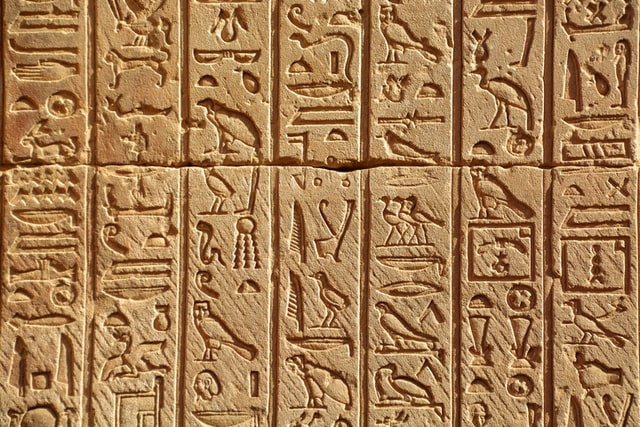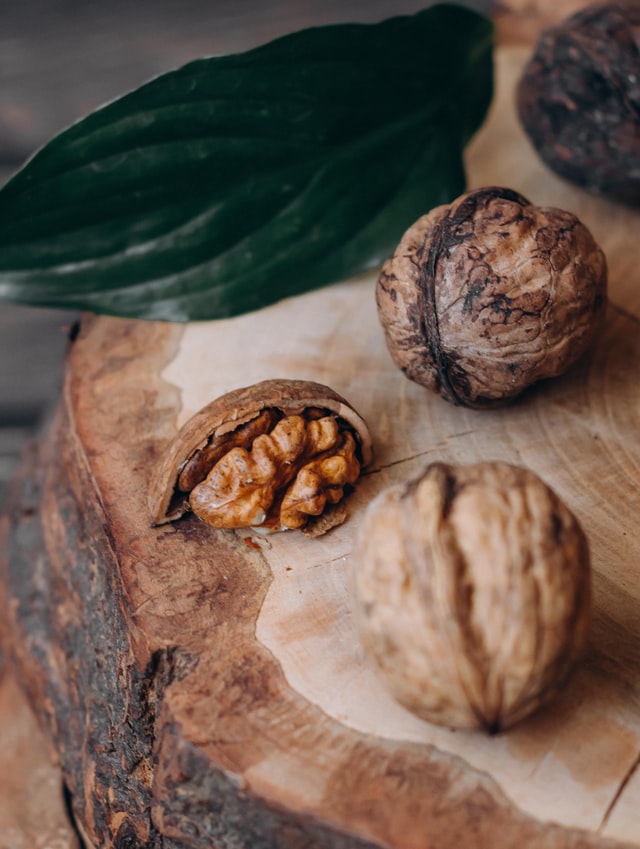
“Synchronicity is no more baffling or mysterious than the discontinuities of physics. It is only the ingrained belief in the sovereign power of causality that creates intellectual difficulties and makes it appear unthinkable that causeless events exist or ever could exist.” – Carl Jung
What if in the world around us, we have signs or messages to us presented each moment of each day?
What if there was the chance that things we chalk up to coincidence, are not so much of a coincidence after all?
What if the little subtleties of our environment, down to the very shape or color of a leaf on a plant were actually guides, or perhaps even natural instruction manuals?
As humans, we are visual creatures. We are highly reliant on our sense of sight, and through our eyes, learn so much about the world around us. Perhaps it is no coincidence that the natural world has learned to communicate with us through symbolism or imagery. Matter of factly, many of the most early and ancient languages were not expressed through words, but through pictographs, art, and hieroglyphics. It only makes sense that we would learn to interact with sentient forms that surrounded us in a similar way.

This month, we invite you to explore the concept of synchronicity, or a concept developed by Carl Jung, a psychologist and the founder of analytical psychology, which summarizes the phenomenon of meaningful coincidences. This concept is explained further by abundance life coach Evelyn Lin who states that:
“The Universe reveals itself through synchronicity. It orchestrates the events, people, and environment; and lining them up, so that you are exactly where you need to be. Synchronicity takes place like a “vibrational beacon” that transmits a divine message or coded sign back to you; indicating you are in alignment or on the right path.”
While in a spiritual sense, the phenomenon of synchronicity can act as more of an affirmation of where you are currently in your journey, the herbal world has its own form of meaningful coincidence in order to help guide us as to the uses or properties of a plant. This phenomenon has been even been referred to since ancient times as the “language of plants,” and is formally known as the Doctrine of Signatures.
As we do frequently in this space, we welcome and encourage you to tap into your sense of intuition. Can you think of a time where you observed a plant, and felt that by observing its shape or color, that you sensed what it could correspond to in the body? If not, we encourage you to participate in a short exercise with us.
Imagine a walnut.

What does the shape remind you of when you think of a walnut? Think about the fact that it is protected by a firm, thick outer shell. It also is split into two halves, that resemble lobes. It also appears wrinkly or lumpy.
Do you see where we are going with this? The walnut is similar in appearance to the human brain. What is even more interesting, is that beyond it looking like a miniature version of this very important organ, it has been found that walnuts are rich with fatty acids, which help to improve concentration and memory.
This concept, in which plants in nature that replicate or alludes to parts of our body are then good for that part of the body, is the basis upon which the Doctrine of Signatures is built.
The Doctrine of Signatures is a very ancient concept, it can be traced as far back as the 1st century C.E. It was during this period that the Greek physician associated with the Materia medica (or the key fundamental tool of all herbalists in which notes are kept to help further study and connect with plants) Pedanius Dioscorides held the belief that plants were marked with “signatures” of God.
These “signatures” were the imagery that the plant held that was used to determine which aspect of the body they would benefit – for example, the fact that plants that have red berries or pigments tended to be used to help with blood-related ailments.
While the concept of the Doctrine of Signatures can be traced back to ancient Greece, it is believed that the term was coined and became identified as what we know it today in 1621. It was derived from a book titled “The Signature of All Things,” which was written by Jakob Boehme, who was a German theologian, mystic, and philosopher.
So how reliable is the Doctrine of Signatures, really?
There is no denying that the synchronicity associated with the herbal world and their effects on our bodies is profound. And for those who want to connect with plant spirits, and further delve into their relationships with plants on an intuitive level, the Doctrine of Signatures can be a valuable tool in this development. One can think of the imagery associated with plants as small clues that can give further insight into the properties of the plant, and help one to better develop a relationship with that plant.
Incorporating the Doctrine of Signatures into one’s practice can also help us deepen our intention to be present with the plant, observing all aspects of it, down to its color, and expanding our curiosity.
In many ways, this philosophy appears to be true. For example, the herb horsetail, which lives up to and resembles its name, looks like the thick, luscious tail of a horse. Oddly enough, the properties of this plant also help to further strengthen our hair and nails due to the fact that it contains a large amount of silica.

The Doctrine of Signatures does not have to necessarily end with the visual aspects of a plant but can appeal to us in other ways too. The environment and ecosystem in which the plant exists can also be a clue as to the properties of the plant. Let’s look at the aloe plant. This plant survives in incredibly the arid, dry, and hot climates of the desert. However, it holds a gel inside its leaves that is incredibly cooling and moisturizing and counteracts the pain of a sunburn. A plant that has the ability to heal the adverse effects of the climate in which it survives exists, and can be a protective and supportive ally to us in this way.
While the Doctrine of Signatures can be one tool in our belt, it should not be the only tool that one relies on solely for the identification of the healing properties of an herb. While in many ways, the imagery of a plant can reflect true healing ability for the associated organs, sometimes nature can be tricky.
As an example, many plants have leaves may have a heart-shape to them, however, this does not mean they are safe for heart conditions, let alone consumption, as they can be incredibly toxic. Another such example is the mandrake root we explored in previous blog posts. Due to the fact that this root very much resembles qualities that look like a small human infant, it was believed in older times to be beneficial for fertility. We know today that this is not true, and is actually dangerous for consumption.
Additionally, the Doctrine of Signatures is, frankly, subjective. As pointed out by author Matt Simon, “That root may look like a kidney to you, but it sure looks like a liver to me.”

As with anything in the practice of herbalism, it is important, and imperative, to use the array of tools you have at your disposal when working with herbs, especially medicinally. Before attempting to consume any plant internally, it is important that one is absolutely sure of the properties and contraindications (or a condition that makes a particular treatment or procedure inadvisable – such as the fact that rosemary may be safe for one person, but can be harmful for someone with high blood pressure). One should do their research on herbs they work with, and be advised by a trusted and trained herbal practitioner.
While we don’t rely on the Doctrine of Signatures nowadays to inform our decisions about how a plant may be of medicinal benefit, exploring the concept can be a powerful tool in deepening our sense of intuition, connection, and understanding of the natural world.
Perhaps on your next walk outside, you will experience a deeper sense of presence, and partake in deeper observation, exploring plants more fully than just their initial physical appearance. Take notes of what you intuitively sense when you explore the deep purple hues of a chokecherry, or the branches of trees that resemble the bronchioles of lungs.
How often are you correct about what you sense?
Perhaps this year, after expressing gratitude for your meal, spend a little more time observing the vegetables on the table. Perhaps they have more qualities than meet the eye – They may just hold a message from the divine!
Happy exploring!
Sources:
- Baldwin, Sara. “The Doctrine of Signatures: Reading the Signs of Nature.” Medium. 27 March 2017. https://medium.com/@SarahBaldwin/the-doctrine-of-signatures-reading-the-signs-of-nature-a8cd50739051
- Coleman, Rachel Fae. “Doctrine of Signatures: An Introduction to Deepening our Connections with the Beneficial Properties of Plants. The Herbal Academy. 28 December 2017. https://theherbalacademy.com/doctrine-of-signatures/
- Healthy Hildegard. “The Doctrine of Signatures and Healing Plants.” Healthy Hildegard. 2020. https://www.healthyhildegard.com/doctrine-signatures-healing-plants/
- Shiel, William, M.D. “Medical Definition of Contraindication.” MedicineNet. 2020. https://www.medicinenet.com/script/main/art.asp?articlekey=17824
- Simon, Matt. “Fantastically Wrong: The Strange History of Using Organ-Shaped Plants to Treat Disease.” Wired. 16 July 2014. https://www.wired.com/2014/07/fantastically-wrong-doctrine-of-signatures/
Browse by category
- Aromatherapy
- Astrology & Magic
- Ayurdeva
- Botany Foraging & Gardening
- Chakras
- Digestion
- Earth Connection
- Energetics
- Flower & Gem Essences
- Folk Traditions
- Herbalism & Holistic Health
- Immune Support
- Materia Medica
- Mushrooms
- Nutrition
- Seasonal Living: Autumn
- Seasonal Living: Moon
- Seasonal Living: Spring
- Seasonal Living: Summer
- Seasonal Living: Winter
- Skin & Body Care

Don’t Miss a Thing!
Enter your email below to be the first to know about sales, new products and tips for taking care of your pieces.

